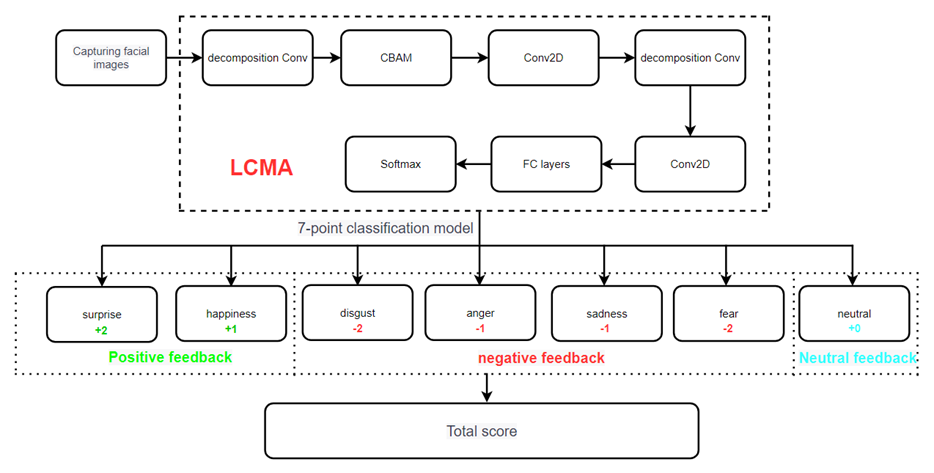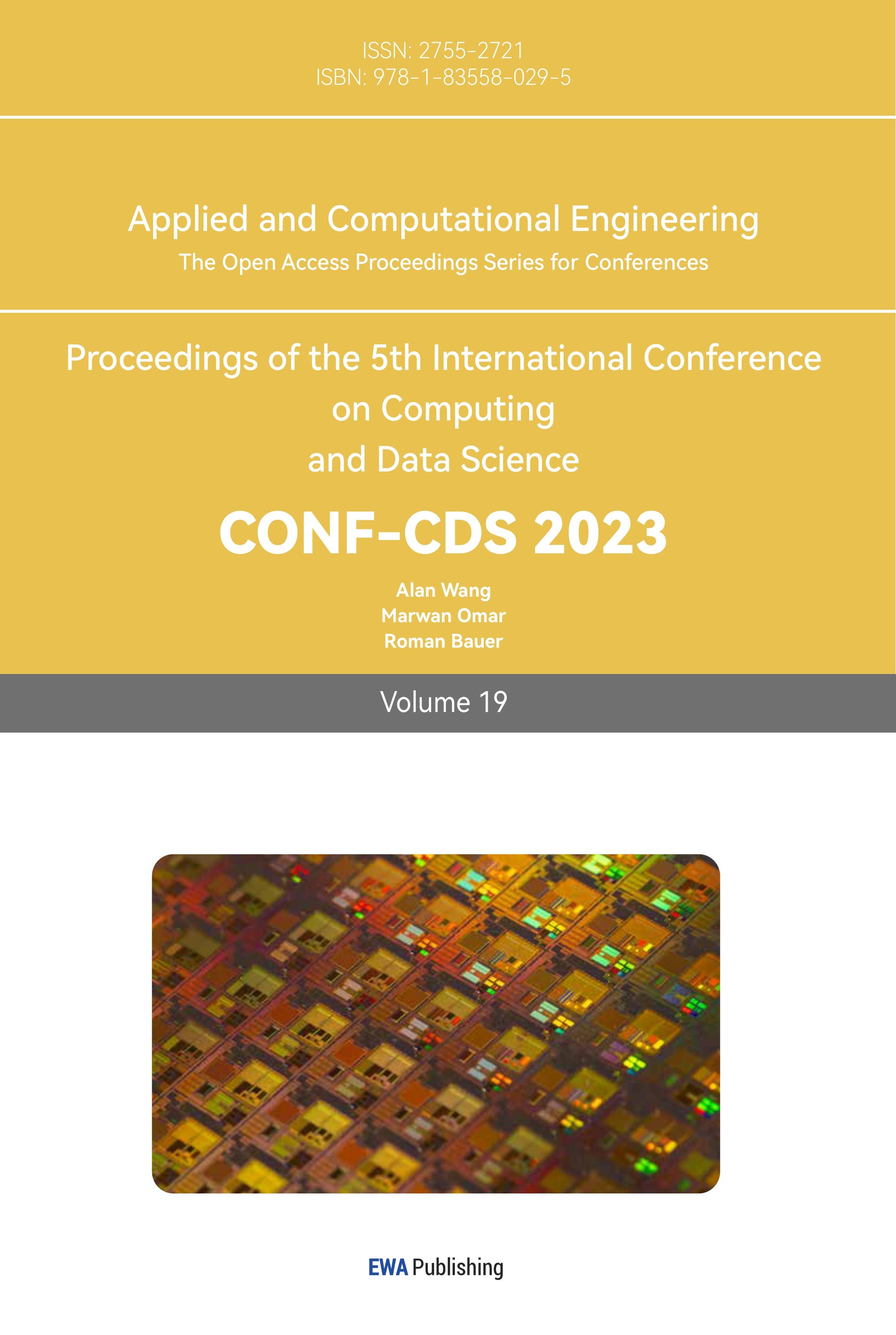1. Introduction
As the demand for entertainment and relaxation in modern society increases, games, as one of the most popular forms of entertainment, require continuous innovation and improvement to meet the needs of players. Traditional game design often has some problems, such as a single game scene, simple character behavior patterns, and fixed gameplay, which can affect the playability and interest of the game, leading to player churn and decreased satisfaction [1]. Therefore, the introduction of artificial intelligence technology has become an effective way to solve these problems. With the continuous development of artificial intelligence technology, its application in game design is becoming increasingly widespread. Artificial intelligence technology can not only bring more realistic and rich game experiences to players, but also provide personalized and customized game plots and gameplay for each player, increasing player engagement and loyalty. It is evident that artificial intelligence technology plays an important role in the field of game design [2-4].
This paper will focus on the application of artificial intelligence technology in game design from three aspects. Although the application of artificial intelligence (AI) technology in game design is widely used, the literature in this field is not sufficiently comprehensive. Therefore, this paper summarizes and analyzes the application scenarios of AI technology in game design from three aspects. Firstly, in terms of character behavior patterns, this paper summarizes the currently advanced methods for designing character behavior patterns. By citing examples from two games, Red Dead Redemption 2 and Sea of Thieves, the impact of non-player character (NPC) character behavior patterns on game immersion, realism, and player experience is analyzed and discussed. Secondly, in terms of environmental interaction and scene changes, the important application of AI technology in environment design is demonstrated by analyzing the intelligent scene generation and dynamic changes in two highly influential games. Finally, in terms of emotional perception and feedback, this paper combines facial recognition analysis to discuss the application direction of the LCMA model in games and the evaluation criteria for dynamically adjusting game difficulty.
The research results of this paper aim to promote the application and development of artificial intelligence technology in the field of game design, and also provide theoretical technology and practical references for game designers and developers. In addition, the research results of this paper can also provide references for the marketing of the game industry and provide players with better game experiences and services.
2. Character behavior patterns
Character behavior patterns are one of the most important parts of every successful game, and complex and varied character behavior patterns can greatly increase a game's playability.
Up to now, the two mainstream methods of character behavior pattern design are deep reinforcement learning and adaptive algorithms. Deep reinforcement learning is an artificial intelligence technique that combines deep learning and reinforcement learning, widely used in various types of action and strategy games. It adjusts the weights of the policy network based on rewards and punishments obtained from the interaction between the agent and the environment, thereby improving the decision-making ability of the agent. In the game, the agent gradually develops more efficient strategies and skills by continuous trial-and-error, greatly enhancing the entertainment and challenge of the game [5]. On the other hand, the other adaptive algorithm is a data-driven approach that adjusts character behavior by analyzing player behavior data, mainly divided into two types: data mining-based methods and machine learning-based methods. The former discovers patterns and trends in game data and designs character behavior patterns accordingly, such as adjusting the character behavior according to player behavior data to address issues such as high or low game difficulty [6-10]. The latter trains a classification model to predict player game preferences and adjusts character behavior patterns to better meet player needs and preferences. The symbiotic game agent model was developed to achieve the coexistence of multiple character behavior patterns in games. This model offers flexibility and robustness, allowing for the smooth exchange of symbiotic agents without interfering with other agents. As a result, game characters can be adaptively adjusted without interruption. Building upon the symbiotic game agent model, the AdaptiveSGA model is proposed to achieve adaptive game artificial intelligence for dynamic difficulty balancing by manipulating character behavior [3].

Figure 1. Conversing with NPCs in Red Dead Redemption 2 [11].
In Figure 1, "Red Dead Redemption 2" utilizes deep reinforcement learning strategies, where the environment serves as a driving background for the agent's actions, and a trained neural policy network autonomously generates corresponding actions, resulting in unpredictable behavior for each character. Through the analysis of actions and language during interactions with the protagonist, Arthur, their neural policy network is iteratively updated based on corresponding rewards and punishments, resulting in each character having their own emotions and perceptions. The protagonist's attitude and actions towards each character will affect their opinion of Arthur and change their own behavior pattern. This fully immerses players in a dynamic western world.

Figure 2. Skeleton monsters in Sea of Thieves [12].
In the game Sea of Thieves (Figure 2), the three hostile AI characters, skeletons, sharks, and sea monsters, are adjusted based on data mining methods, by collecting and analyzing different behavior patterns of players to modify their attack modes and appearance scale, and generating a varying number of AI characters with unique personalities on different islands according to player behavior. It is precisely due to the successful character behavior patterns in these two games that a diverse, challenging, and constantly surprising game world has been created, attracting a large number of players and further enhancing the game's playability.
3. Environment interaction and scene changes
The Application of Artificial Intelligence Technology in Game Environment Interaction and Scene Change can bring a more realistic, diverse, and lifelike experience to games. In traditional games, the game environment is often static, and the scenes are predetermined, but obviously, such conditions are difficult to meet the diverse needs of players for gaming experience. Artificial intelligence technology can achieve the adaptability of game environment through intelligent generation and dynamic change, thus creating more unpredictable factors for a game environment.

Figure 3. Crafting recipe for power source in "Minecraft" [13].
The popular sandbox game "Minecraft" in recent years is a good example of the use of intelligent environment generation and dynamic changes in games (Figure 3). In this game, players can unleash their creativity by building structures, crafting tools, and exploring the vast and procedurally generated game world. The game's success lies in its ability to offer players a sense of freedom and agency over their gaming experience.
One of the key features that make "Minecraft" stand out is its intelligent environment generation and dynamic changes. The game world is created and procedurally generated based on the player's seed value, which is a unique identifier that players can use to generate a specific world. This allows for infinite possibilities of game worlds, each with its own terrain, biomes, and structures.
In addition to the game world's intelligent generation, the environment and scenes in "Minecraft" also dynamically change based on the player's actions. For example, if a player digs a hole in the ground, the surrounding terrain will shift and adjust accordingly. Similarly, if a player builds a structure, the surrounding landscape will adapt and change, creating a more realistic and immersive gaming experience. This dynamic environment not only makes the game more challenging and playable but also allows players to create and modify their game world in unique and exciting ways. By allowing players to have agency over the game's environment, "Minecraft" provides a sense of ownership and control that is not found in many other games. This is an important factor in the success of a game and the use of AI environment interaction and dynamic changes in games.
It is evident from the previous discussion that the success of Minecraft can be attributed to its intelligent environment generation and dynamic changes, which provide players with a more immersive and personalized gaming experience, thereby attracting a large number of loyal fans.
Similarly, in the game "The Legend of Zelda: Breath of the Wild," some details of game environment interaction and scene changes perfectly illustrate the importance of artificial intelligence technology, such as the fact that besides using bundles of wood, warming mushrooms and warming grass fruits can also produce upward airflow, and the degree of wall wetness when climbing on rainy and sunny days will dynamically change, making climbing more difficult (Figure 4). These various dynamic scene change techniques undoubtedly increase the fun and realism of the game. Moreover, dynamic scene changes can significantly enhance player immersion and engagement in the game world. For instance, the interactive physics system in the game allows players to interact with the environment creatively and uniquely, such as using metal objects to create electric currents that can stun enemies or activate machinery, and using bombs to destroy rocks and other obstacles to create their own pathways. Additionally, the game features a complex weather system that can change instantly from sunny to rainy, affecting the player's ability to explore and survive in the game world. For example, climbing walls in the rain will become more challenging due to the increased degree of wall wetness. The game's wildlife also exhibits dynamic behavior, reacting differently to the player's presence based on the time of day, weather conditions, and their proximity to other animals. Some animals may be more active during the day, while others may only appear at night, adding a layer of realism to the game world and increasing the challenge for the player. Intelligent enemy AI is also present in the game, which can adapt to the player's actions and change their tactics accordingly. For instance, enemies may become more aggressive if the player attacks them or may retreat if they feel outnumbered. This intelligent AI system ensures that combat in the game remains challenging and engaging throughout the player's experience.
In summary, dynamic scene changes are an important aspect of modern game design, contributing to a more immersive and interactive game world. With the game's continued popularity and updates, it is clear that the trend towards intelligent environment generation and dynamic changes in gaming is here to stay. Only by utilizing artificial intelligence technology to create dynamic and engaging game environments, where players are free to explore, experiment, and create their own unique experiences, can a game truly stand the test of time.
4. Emotion perception and feedback
In the game, facial recognition technology is utilized to enable artificial intelligence to recognize players' facial expressions and collect physiological indicators such as voice and heart rate in order to perceive players' emotions and reactions. For instance, when a player's facial expression indicates fear or nervousness, or their heart rate significantly increases, the AI system can automatically adjust the game's visuals, sound effects, and enemy behavior patterns to create a stronger atmosphere. Furthermore, through emotion perception and feedback, AI can provide more personalized feedback, offering distinct prompts for players with varying levels of receptivity.
One important application of emotion perception and feedback in games is in the use of adaptive difficulty systems. For example, whenever the AI system detects that a player is feeling frustrated or overwhelmed, it can help them progress in the game by lowering some of the game's difficulty, providing useful hints or extra resources. Conversely, if the player feels bored or unchallenged, the AI system can increase the difficulty to provide a more engaging experience. By analyzing the player's emotional state, AI adjusts the game environment to provide personalized feedback, allowing each player to have a smoother and more seamless gaming experience.
Another important application of emotion perception and feedback is in AI-driven dialogue interaction systems. By analyzing a player's tone and language patterns, AI can customize dialogue options to adapt to the player's emotional state, making the gaming experience more attractive and personalized. Additionally, for some sports-type games, AI can monitor a player's emotional state and physical performance, and provide feedback to better coordinate with the player, thereby achieving better tactical outcomes.

Figure 5. Schematic diagram of player emotion perception and feedback rating process.
This section introduces a research direction for dynamic difficulty adjustment in games based on an attention lightweight convolution model (LCMA) or emotion perception and feedback scoring [1-2]. The model utilizes real-time scoring of the player's facial reactions to determine how the game should be adjusted and developed. As shown in Figure 5, facial micro-expression images of the player are captured and processed using the streaming convolution structure and multi-scale coding strategy of the LCM. The LCMA model employs a 7-category model, with each expression assigned a different weight, and the final score is obtained by evaluating the weighted sum within a set time limit. If the score falls between -10 and 10, no adjustment is necessary. Scores below -10 indicate negative feedback, and the game's difficulty should be suitably reduced. Conversely, if the game's challenge is too low, it should be increased [9].
5. Disadvantages and drawbacks
• Lack of human emotions and intuition:
Although AI can perform various tasks in games, they lack human emotions and intuition. This means that AI cannot perceive emotions and experiences in the game like humans, nor can they adapt to players' emotional demands. This may lead to the game's performance being worse than expected, thereby affecting players' experience and enjoyment.
• Unpredictability of AI decisions:
AI decisions in games are driven by algorithms and data synthesis. This may lead to unpredictability of decisions, making it difficult for players to understand the game's internal logic and AI behavior, significantly increasing game difficulty and reducing playability [4]. This may lead to low player engagement, thereby losing interest in the game.
• Privacy and data security issues:
AI training in games requires collecting a large amount of player data and personal information to improve their learning and decision-making. This may lead to privacy breaches and data security issues, which need to be emphasized and maintained by developers.
• Technical and cost issues:
AI technology is a complex and time-consuming technology that requires a lot of technical support and development costs. Excessive application of AI technology may not only lead to the game's large size and optimization difficulties, but also make it difficult for developers to implement and maintain the game. This may also lead to high game prices, affecting players' acceptance.
• Ethical and moral issues:
Since AI game decisions and behaviors are algorithm and data-driven, they cannot make decisions like human decision-makers. This may lead to a series of ethical and moral issues, such as racism, bias, inequality, and whether it will affect players' values and behavior.
In summary, although the application of artificial intelligence technology in game design has excellent prospects, there are still many disadvantages and issues that need to be resolved. Developers and researchers need to carefully consider these issues to ensure that AI can better serve players in games while not causing unnecessary problems.
6. Conclusion
This article summarizes and discusses the application of AI in game design from three aspects, and identifies the shortcomings that currently exist. Firstly, it summarizes the design schemes of current character behavior patterns, and provides examples of advanced AI character behavior pattern applications in games, highlighting the importance of AI character behavior patterns in enhancing the gaming experience. Secondly, using the game examples of "Minecraft" and "The Legend of Zelda: Breath of the Wild," it discusses the importance of dynamic changes in game environments and the necessity of adapting to player actions. Thirdly, this article emphasizes the application of emotion perception and feedback in games. By collecting facial expressions and physiological indicators, AI can perceive player emotions and reactions and automatically adjust the game's visual effects, sound effects, and enemy behavior patterns to create a more immersive atmosphere. Finally, the article analyzes and summarizes the deficiencies and disadvantages of artificial intelligence technology in game design from five directions: emotion, decision-making models, data security, technology, and ethics.
In the future, NPC character behavior patterns will become more intelligent and better able to simulate real-life behaviors and decisions. Advanced machine learning algorithms will be utilized to identify and adapt to player behavior and decision-making, leading to better interaction with players. Environmental AI will also be able to better simulate real-life physical and biological environments, including weather, terrain, and ecosystems, and adapt game difficulty levels according to player performance, making game difficulty switching smoother and more challenging. These developments will better meet the different needs of players with varying levels of receptivity.



